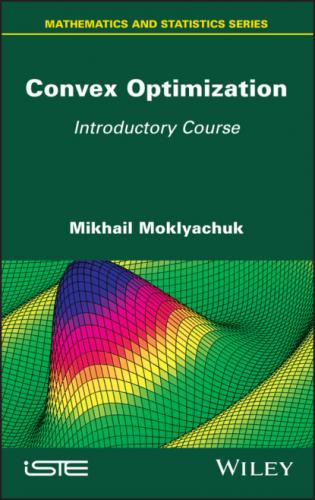The vector
at the point
Gradients
Answer.
EXAMPLE 1.6.– Solve the convex constrained optimization problem
Solution. Slater’s condition is fulfilled. Therefore, we write the regular Lagrange function:
The system for finding stationary points in this case (s = 0, n = 2, k = m = 3) can be written in the form
At point
System solution
Answer.
EXAMPLE 1.7.– Let the numbers a > 0, b > 0, and let a < b. Find points of the local minimum and the local maximum of the function
on the set of solutions of the system
Solution. We denote this set by X. Let us write the Lagrange function
Figure 1.2. Example 1.6
The system for determining stationary points has the form
[1.4]
[1.5]
[1.6]
[1.7]
[1.8]
Let xi = 0. Then it follows from the system that x2 ≥ 1,
1 1) x1 = 0, x2 = 1, bλ0 + 3λ1 − 2λ2 = 0, λ1 ≥ 0, λ2 ≥ 0, (λ1, λ2) ≠ 0;
2 2) x1 = 0, x2 = −1, bλ0 − 2λ2 = 0, λ1 = 0, λ2 > 0.
Similarly, assuming that x2 = 0, we obtain two other groups of solutions:
1 3) x1 = 1, x2 = 0, aλ0 + 3λ1 − 2λ2 = 0, λ1 ≥ 0, λ2 ≥ 0, (λ1, λ2) ≠ 0;
2 4) x1 = −1, x2 = 0, aλ0 − 2λ2 = 0, λ1 = 0, λ2 > 0.
Assume that x1 ≠ 0, x2 ≠ 0. Then equations of the system can be presented in the form
If here λ1 = 0, then λ0 = 0, since a ≠ b. But then λ2 = 0, which contradicts the system of conditions. It remains to be assumed that λ1 > 0. Then
Note that in (1) and (3) the multiplier λ0 can accept both positive and negative values, in (2) and (4) it can accept only positive values and in (5) it can accept only negative values. Therefore, (0, 1) and (1, 0) are stationary points both in the minimization problem and in the maximization problem, (0, –1) and (–1, 0) are stationary points only in the minimization problem, and the point of (5) is the stationary point only in the problem of maximization.
Now we will study the stationary points for optimality. The function f is strongly convex on ℝ2. Therefore, it reaches the global minimum on any closed set X. We calculate the value of f at the stationary points of the minimization problem:
Since a < b, hence (1.0) and (–1.0) are points of the global minimum of the function
